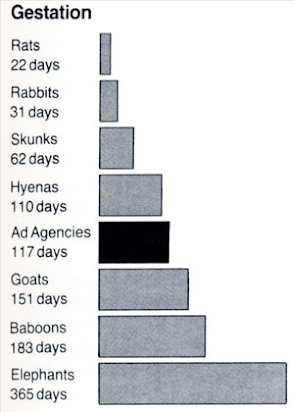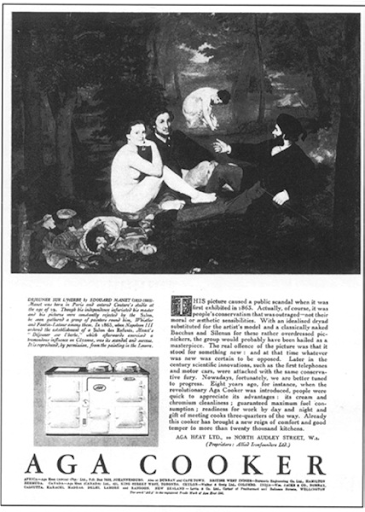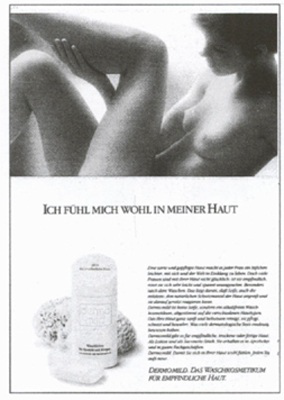Invaluable Insights from an Advertising Maestro: Crafting Compelling Ads that Drive Sales
Adapted from the book Ogilvy on Advertising

In the opening statement, Ogilvy asserts his view that advertising is not an art form or entertainment, but rather a medium of information. According to him, its primary function is not necessarily to be creative but to be sufficiently intriguing for consumers to make a purchase. He contends that the essence of advertising lies in capturing consumer interest, ultimately leading to product acquisition. Ogilvy elaborates on this perspective in his book, “Confessions of an Advertising Man,” detailing the transformative journey of his company from a small design boutique in the 1960s to becoming one of the world’s top four advertising agencies. This evolution, he emphasizes, was driven by adhering to his fundamental principles of advertising.
Creating Effective Advertisements
According to Ogilvy, the most critical aspect of advertising is the distinction between one advertisement and another. To illustrate this point, he references John Caples, who noted that some advertisements sell less than their counterparts solely because of using the wrong appeal. This discrepancy can occur even when both ads occupy the same space, run in the same publication, utilize identical photographic images, and boast carefully written copy.
Ogilvy contends that incorrect advertising approaches can lead to a decline in product sales. He dispels the myth that all advertising inherently increases sales to some extent. Contrary to this belief, he asserts that not every advertising effort contributes positively to sales figures.
Preparation for Success in Advertising
Engaging in preparatory work is the initial stride toward crafting successful advertising. This necessitates a comprehensive study of the product before embarking on an advertising campaign. The genesis of a compelling idea arises from a profound understanding of the product. David Ogilvy illustrates this principle with the example of the Rolls-Royce campaign he conducted in the ’60s. Spending three weeks immersing himself in the brand, he devised a headline and 607 words of factual copy: “At sixty miles an hour, the loudest noise comes from the electric clock.”
Subsequently, when tasked with the Mercedes Benz account, Ogilvy initiated a three-week research phase, interviewing engineers. This groundwork laid the foundation for an extensive advertising campaign that propelled Mercedes to significant success.
Ogilvy underscores the importance of studying the brand before launching an advertising initiative. This meticulous approach contributed to his success in advertising campaigns for various brands, including Good Luck Margarine, Shell Gasoline, and others.
He warns against bypassing this essential homework, emphasizing that while an occasional successful campaign might occur without it, such an approach is not the most reliable or secure path.
Furthermore, Ogilvy stresses the significance of monitoring competitors’ campaigns for similar products and analyzing their outcomes. This practice aids in refining targeting strategies.
Following this, research becomes imperative to understand consumer behavior. It involves delving into discussions about the brand, identifying product attributes that influence purchasing decisions, and gaining insights into consumer preferences. Even if professionals are not available for this research, Ogilvy suggests that advertisers can conduct informal conversations with consumers, which can sometimes yield more beneficial insights than formal surveys. This firsthand understanding serves as a valuable resource when crafting compelling copy for commercials or print ads.
In conclusion, Ogilvy advocates for thorough preparation, asserting that success in advertising is intricately linked to the depth of understanding gained through diligent homework, competitor analysis, and insightful consumer research.
Strategic Product Positioning
The term “positioning” holds significant favor among marketing experts globally, underscoring the pivotal role it plays in product promotion. However, the concept’s interpretation varies among individuals. David Ogilvy offers his distinct definition, describing it as “What the product does, and who it is for.” To illustrate, he could have positioned Dove as a detergent bar for men with dirty hands, but instead, he chose to position it as a toilet bar for women with dry skin—a strategy that continues to thrive.
In Norway, SAAB took on the role of a car designed for winter, a positioning that proved effective when, three years later, it was crowned the best car for Norwegian winters.
The iconic Volkswagen adopted a unique positioning strategy by presenting itself as a protest against Detroit, cultivating the Beetle as a symbol embraced by nonconformists. This deliberate positioning led to a substantial increase in car sales, reaching an impressive 500,000 units annually. The Volkswagen Beetle became more than just a car; it became a cultural phenomenon.

Crafting Brand Persona
The concept of brand image equates to personality, signifying that a product, like a person, should exude a distinct character. A product’s personality encompasses various elements such as its name, colors, logo, packaging, price, advertising style, and, most crucially, the inherent nature of the product itself.
According to Ogilvy, advertising must consistently align with the brand’s image or personality. Deviating from the established personality can detrimentally impact the product’s position in the consumer’s mind. For instance, if a soap is associated with the personality of a beautiful woman, a sudden shift in the advertising campaign to a different persona can undermine the established image.
Furthermore, Ogilvy emphasizes that consumers not only taste a product but also consume its image. He provides an example involving whiskey, suggesting that people perceive the taste of a product differently based on the associated image. The choice of a whiskey brand is, essentially, a selection of an image. For instance, Jack Daniel’s advertising portrays an image of simple honesty, influencing consumers to believe that its higher price is justified and indicative of superiority.
In the realm of advertising for beverage products, Ogilvy recommends a subtle and non-factual approach to the copy. He shares that attempts with overly rational facts in advertising, such as citing specific percentages, may not resonate effectively with consumers. For instance, in Coca-Cola advertising, focusing on the content percentage does not yield the desired impact.
Ogilvy cites the success of Leo Burnett’s campaign for Marlboro as a testament to the power of creating a compelling brand image. The campaign transformed Marlboro from relative obscurity to the best-selling cigarette globally by crafting an image that resonated with smokers worldwide.
In essence, Ogilvy underscores the critical role of maintaining a consistent brand persona across all facets of marketing, as it profoundly influences consumer perception and choice.
Unveiling the Essence of the Big Idea
The cornerstone of any impactful advertising campaign is the presence of a big idea. Without it, irrespective of the campaigns launched or the copy crafted, the chances of capturing the attention of the target audience and persuading them to make a purchase are minimal. But what exactly constitutes a big idea? According to Ogilvy, a big idea stems from the unconscious mind. To tap into this creative wellspring, he suggests feeding the conscious mind with information and allowing the rational thought process to unfold.
Ogilvy advocates against copywriters succumbing to boredom and churning out uninspired ideas. Instead, he recommends engaging in activities like taking a walk, a bath, or enjoying a hot drink to stimulate the mind, leading to the emergence of ideas from the deeper recesses of one’s consciousness.
A crucial element of a successful copy, according to Ogilvy, is the inclusion of imagery. He underscores that a copy lacking imagery fails to captivate the reader’s attention. However, he acknowledges that recognizing a big idea is challenging, and a genuine big idea stands the test of time, working effectively for thirty years or more.
To identify a big idea, Ogilvy proposes answering specific questions:
-
- Does it elicit a gasp upon first sight?
-
- Do you wish you had conceived it yourself?
-
- Is it truly unique?
-
- Does it align perfectly with the strategy?
-
- Could it endure for 30 years?
While an average advertising campaign may endure for five years, those harboring big ideas can persist for more than 25 years. Notable examples include the enduring 30-year run of Dove commercials and the remarkable 40-year span of Leo Burnett’s Marlboro campaign.
Ogilvy also acknowledges that simplicity, even in showcasing the product, can be the most powerful idea of all. This, he notes, requires courage, as it may be misconstrued as lacking creativity. Yet, at times, the most effective ideas are those that showcase the product with utmost simplicity.
Elevate the Product as the Protagonist
In the realm of advertising, it’s imperative to position the product as the central figure. Occasionally, clients may request a creative design, yet the resulting idea might lack inspiration due to the perceived dullness of the product. In such cases, the blame doesn’t lie with the copywriter; rather, it stems from the product appearing lackluster and unremarkable. The key is that if the product fails to captivate your interest, generating compelling ideas becomes a challenging task.
Moreover, the differentiation of products from their competitors is essential. However, numerous products share similar tangible values, posing a challenge for advertising agencies striving to create persuasive ads. In such scenarios, the primary approach is to present the product’s values more persuasively than competitors and distinguish it through the distinctive style of advertising. This strategic differentiation becomes crucial when faced with products that inherently possess similar attributes, allowing agencies to carve out a unique space in the market by effectively communicating the product’s distinct values.
The Power of Positivity
According to Ogilvy, adopting a positive approach in advertising is more effective than outright claiming superiority over competitors. Embracing positivity enhances the credibility of your brand, instilling in consumers the belief that your product is indeed good. Going beyond this positive assertion can breed doubt and uncertainty among consumers. Instead of attempting to overpromise, especially when competitors offer excellent products, the key is to confidently state that your product is good. Clarity, honesty, and informative communication are paramount. A well-told story not only boosts sales but also instills confidence in the marketer, affirming that their product is undeniably good. This positive approach proves particularly effective in marketing parity products.
Repeat Successful Strategies
A successful advertisement should be repeated as long as it continues to sell. Periodic research is essential to gauge the ongoing effectiveness of an advertisement. If research indicates a decline in sales impact, it becomes imperative to reconsider and potentially halt the campaign.
The Influence of Word of Mouth
Advertising campaigns have the potential to transcend mere promotion and become embedded in culture. They can elevate models to celebrity status or enhance the popularity of existing celebrities. Instances abound where advertising models transition into TV celebrities, showcasing the profound impact of advertising in shaping cultural trends.
Down with Committees
The creative process in advertising should avoid unnecessary complexity, often induced by numerous executives with divergent views. Involving committees in the creative process tends to complicate and dull advertisements, making them less appealing to viewers. Committees, while capable of criticism, cannot generate creative ideas. As a result, minimizing committee involvement is crucial for crafting competitive and successful creative campaigns.
The Timeless Nature of Big Ideas
While ideas may surface swiftly, developing a truly big idea requires time. Advertising agencies, though adept at generating ideas, often face challenges in swift execution. The average time taken to produce a campaign is approximately 117 days, a duration faster than goats but slower than hyenas. This underscores the importance of investing time in cultivating substantial and impactful ideas.

Aspiring Heights
Ogilvy advocates for perpetual ambition, emphasizing that copywriting in an advertising agency has the potential to not only double client sales but also catapult copywriters to fame. Quoting Leo Burnett, he underscores the value of aiming for the stars, noting that even if one doesn’t quite reach a star, they certainly won’t end up with a handful of mud.
The Quest for Knowledge
Continuous learning is paramount for advertising professionals. Ogilvy stresses the importance of expanding knowledge to enhance creativity. Copywriters, in particular, are encouraged to read extensively, focusing on advertising-related literature. Contrary to the misconception that knowledge may constrain creativity, Ogilvy contends that awareness of past mistakes can serve as a guide, enabling the creation of better advertisements. Scientifically informed knowledge aids in crafting campaigns that resonate with readers and achieve higher efficacy. Ogilvy exemplifies this by citing the success of his campaign for Hathaway shirts, shaped by insights into the impact of story appeal in advertisements.
He also notes that clients seeking to lower circulation costs by changing agencies may overlook the significance of a copywriter’s in-depth understanding of their brand and the ability to engage consumers through advertisements.
Direct Response Wisdom
Direct response advertising emerges as a valuable tool for assessing sales impact. While general advertisers may be uncertain about the effectiveness of their ads, direct response advertisers, who directly engage with consumers through various channels, have a more immediate understanding of their sales impact. Ogilvy recommends that every copywriter commence their career by spending two years in direct-response advertising.
The ‘Creativity’ Cult
Ogilvy challenges the notion of creativity solely for its own sake. He echoes the perspective of Benton & Bowles, asserting that if an advertisement doesn’t sell, it isn’t truly creative. In this view, the effectiveness of an ad, both in generating sales and building reputation, is the ultimate measure of its quality. Creativity, Ogilvy contends, doesn’t necessarily have to be groundbreaking or a masterpiece; it simply needs to be a well-told story that drives the upward trajectory of sales.

Sex in Advertising
Sex undeniably has the potential to sell, but its effectiveness hinges on relevance. Ogilvy, in his early endeavors, discovered that sex appeal alone doesn’t guarantee success if it lacks relevance.
An example from his repertoire involves a cooking machine print ad that utilized a picture from Manet’s painting, “Nude Lunch.” While the painting exuded sensuality, it proved irrelevant to the promoted product—a cooking stove. This instance underscores Ogilvy’s assertion that the allure of sex must be aligned with the product or service being advertised.

It’s noteworthy that cultural norms play a role in shaping the appropriateness of portraying women in advertisements. In certain regions, such as Pakistan and some Arab countries, there are prohibitions against featuring women in ads. However, in the context of beauty products, showcasing women is often functional.
Ogilvy’s counsel encompasses a range of strategies: conducting thorough homework, avoiding the pitfalls of committees, learning from research, observing the practices of direct-response advertisers, and steering clear of irrelevant use of sex in advertising.
In subsequent chapters, deeper insights into producing print advertisements that generate tangible results will be unveiled. The focus will then shift to television advertising. These time-tested tips from Ogilvy, if still effective, offer a valuable blueprint for aspiring advertisers to follow in the pursuit of success.